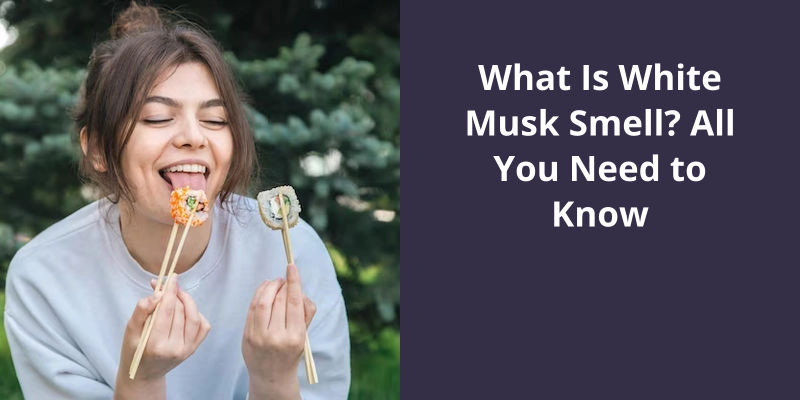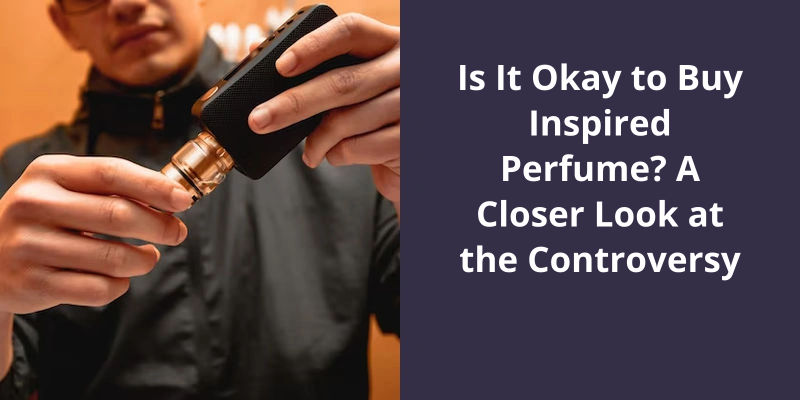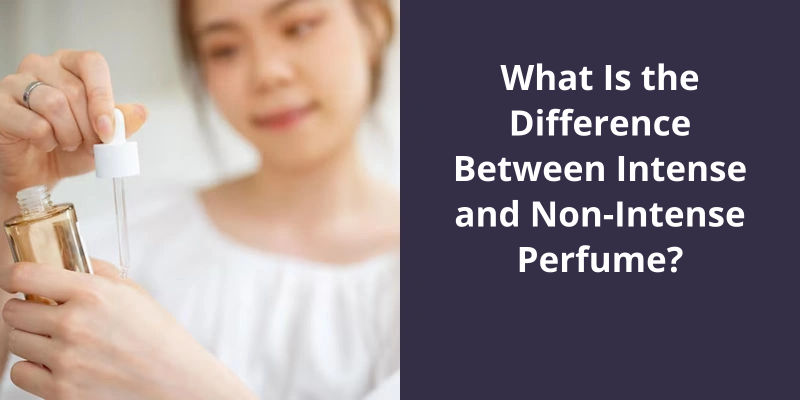White Musk smell is a popular scent often used in perfumes and fragrances. It comes from the secretion of a certain type of deer, specifically the male musk deer. Yet, most White Musk scents today are synthetic for ethical and sustainability reasons. It’s typically described as clean, smooth, and slightly sweet, evoking a sense of warmth and comfort. Despite its name, it doesn’t have a strong animalistic odor. Instead, it provides a subtle, velvety backdrop to other notes in a fragrance, enhancing their qualities while adding depth and longevity.

How Would You Describe White Musk?
White Musk is a fragrance that evokes a sense of freshness and delicacy, with a subtle touch of powdery notes. It’s light and ethereal fragrance make it perfect for those seeking a fragrance that’s gentle, familiar, and not overpowering.
It’s a soft and lingering aroma that isn’t too heavy, making it versatile and suitable for a wide range of personal care products.
It possesses a subtle sweetness that isn’t cloying or overpowering, making it a popular choice for those who prefer a more understated fragrance. It’s powdery undertones add a touch of elegance, making it suitable for both men and women.
The History of White Musk: Where Did It Originate and How Has It Evolved Over Time?
The history of white musk dates back to ancient times, where it was derived from natural animal sources such as the musk deer. The musk gland of these animals produced a strong and musky scent that was highly valued. However, due to ethical concerns and conservation efforts, the use of animal-derived musk has significantly decreased in modern times.
In the early 20th century, the synthetic production of musk became popular. Scientists discovered a way to recreate the musky scent through synthetic compounds, allowing for a more ethical and sustainable alternative. This synthetic white musk quickly gained popularity and became a staple in the fragrance industry.
Over time, white musk has evolved to cater to various tastes and preferences. Perfume houses have experimented with different blends and combinations, resulting in a range of white musk variations. Some may have floral or citrus undertones, while others may be more powdery or woody.
Today, white musk is known for it’s clean, soft, and slightly sweet scent. It’s often used as a base note in many perfumes, adding depth, longevity, and a sensuous touch. The versatility and timeless allure of white musk continue to make it a popular and beloved fragrance ingredient.
Now, let’s delve into the intriguing question: does musk smell different on everyone? While the allure of musk lies in it’s ability to complement our natural skin smell and adapt to our individual body chemistry, this aromatic phenomenon triggers diverse responses, resulting in captivating variations. Rather than evoking unpleasant odors, musk intrigues with it’s ability to enchant and captivate in it’s own unique way. Let’s explore the fascinating world where musk meets diverse skin chemistry.
Does Musk Smell Different on Everyone?
Musk, known for it’s distinct aroma, has the fascinating ability to smell different on each individual it interacts with. This natural phenomenon is partly why musk remains highly sought after in the world of perfumery.
Furthermore, musks unique ability to respond and interact with body chemistry plays a significant role in it’s perennial popularity.
The Science Behind the Interaction Between Musk and Body Chemistry
The interaction between musk and body chemistry is a fascinating scientific phenomenon. Musk, a secretion derived from certain animals, contains compounds that can react with the unique chemical composition of an individual’s skin.
When musk comes into contact with body heat and sweat, it undergoes a chemical reaction known as oxidation. This process breaks down the musk molecules, releasing a range of aromatic compounds into the air. These compounds combine with the natural scent of an individual’s skin, creating a personalized fragrance.
Due to variations in body chemistry, musk can smell different on different people. Factors such as diet, hormonal changes, and even medications can influence the scent of musk when worn on the skin. This is why musk is often described as having a distinctive, sensual, and intimate smell, as it adapts and melds with a person’s unique body chemistry.
Understanding the science behind the interaction between musk and body chemistry helps us appreciate the complexity and individuality of this captivating scent.
As consumers become increasingly aware of the ingredients in their beauty products, the demand for cruelty-free and vegan options has risen. The iconic fragrance of Body Shop’s white musk, however, has undergone a slight change. The reason behind this transformation lies in the elimination of seedlac, a key component responsible for the distinct “musk” scent. While previously deemed cruelty-free, Body Shop has taken a step further by aligning with vegan labeling requirements. Consequently, they’ve made the decision to discontinue the use of this ingredient, resulting in a subtle alteration to the beloved fragrance.
Why Does Body Shop White Musk Smell Different?
The iconic white musk scent from The Body Shop has undergone a subtle change that may have caught the attention of loyal customers. This alteration is primarily due to the exclusion of an ingredient called seedlac, a sticky substance produced by a particular insect species. While this ingredient was deemed cruelty-free by The Body Shop, it didn’t meet the strict vegan standards set by the brand. Consequently, they’ve chosen to discontinue it’s use in their products.
The brand has carefully curated a blend of other high-quality ingredients to maintain the distinct character of their white musk scent. So, even though customers may detect a change in the smell, they can still enjoy a beautiful fragrance that’s ethically produced and aligned with their values.
The History and Significance of White Musk in the Perfume Industry
White musk has a long history and holds significant importance in the perfume industry. It’s a commonly used fragrance note that adds a smooth, clean, and sensual touch to perfumes. Unlike natural animal musk, which is derived from the glands of musk deer, white musk is a synthetic alternative that came into existence due to ethical concerns regarding animal rights.
During the 20th century, the demand for musk fragrances grew rapidly, leading to a decline in musk deer populations. Consequently, scientists and perfumers began developing synthetic musk compounds as a sustainable and cruelty-free alternative. These synthetic musks, including white musk, mimic the scent of natural musk while providing a more affordable and environmentally-friendly option.
White musk is characterized by it’s soft, velvety, and slightly powdery aroma. It blends well with a variety of other fragrance notes, enhancing the overall scent composition. It’s versatility makes it a popular choice for perfumers, who use it in a wide range of products, including perfumes, colognes, body lotions, and soaps.
Overall, white musk plays a crucial role in the perfume industry, offering a sustainable and ethically conscious alternative to natural musk while providing a distinct and alluring fragrance.
White musk scent, also known as synthetic musk, has become the preferred choice in perfumery due to ethical concerns regarding the killing of endangered animals for musk extraction. It’s produced through the use of artificial compounds that fall into three primary categories: aromatic nitro musks, polycyclic musk compounds, and macrocyclic musk compounds. These synthetic alternatives allow perfumers to create musky fragrances without harming any wildlife, ensuring a cruelty-free and sustainable approach to scent creation.
Where Does White Musk Scent Come From?
White musk scent is a popular fragrance note in perfumery, known for it’s subtle yet distinctive aroma. But where does this scent come from? Interestingly, the musk fragrance used in most perfumes today isn’t derived from the traditional source of musk, which is the secretory gland of the male musk deer. Due to the endangered status of these animals, acquiring natural musk requires killing them, making it unethical and unsustainable.
These synthetic musk fragrances can be divided into three major classes: aromatic nitro musks, polycyclic musk compounds, and macrocyclic musk compounds. Each class imparts it’s unique character to the final scent.
Aromatic nitro musks were initially developed in the 19th century and have a distinct powdery and sweet aroma. However, due to potential health concerns and environmental persistence, they’ve been largely phased out of use. Polycyclic musk compounds, on the other hand, exhibit a more earthy and woody scent. They were introduced in the mid-20th century and gained popularity for their longevity and stability in fragrances.
Macrocylic musk compounds are the most commonly used synthetic musks today. They’re known for their clean and soft scent, often described as musky, soapy, or slightly floral. These compounds are structurally similar to the natural musk molecule, allowing them to mimic it’s aroma effectively. Additionally, macrocyclic musks have low toxicity and are environmentally friendly, making them a preferred choice in perfumery.
These synthetic compounds are carefully crafted to replicate the aromatic profile of musk while providing ethical and sustainable alternatives to natural musk.
By utilizing these synthetic alternatives, perfumers can create captivating musk fragrances without the need for harvesting musk from endangered animals.
The History of Musk in Perfumery: Explore How Musk Has Been Used in Perfumes Throughout History and It’s Significance in the Fragrance Industry.
- Musk has been used in perfumery for centuries.
- It was highly valued in ancient civilizations such as Egypt and China.
- Musk was originally obtained from the glandular secretions of musk deer.
- However, due to conservation concerns, synthetic musk is now widely used.
- Musk adds a unique depth and sensuality to fragrances.
- It’s often described as animalistic and earthy.
- In modern perfumery, musk is a staple ingredient in many classic and contemporary fragrances.
- It’s used in a wide range of perfume products, including colognes, eau de parfums, and body lotions.
- Musk has become an iconic note in the fragrance industry, symbolizing sophistication and seduction.
- Perfumers continue to explore and innovate with musk, creating new and exciting scent combinations.
Source: Musk – Wikipedia
Conclusion
While many common musks fall under the white musk category, it’s important to note that there are three specific categories that make up this intriguing scent. Whether it evokes images of delicate flowers, metallic undertones, or the freshness of cotton, white musk continues to captivate with it’s unique and diverse essence.





